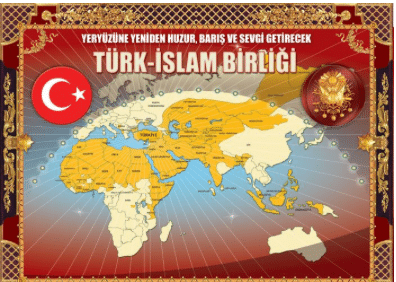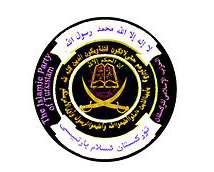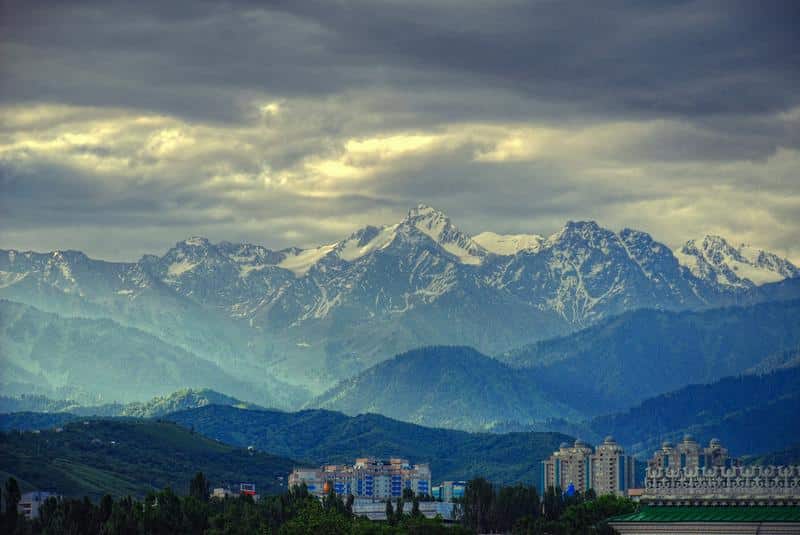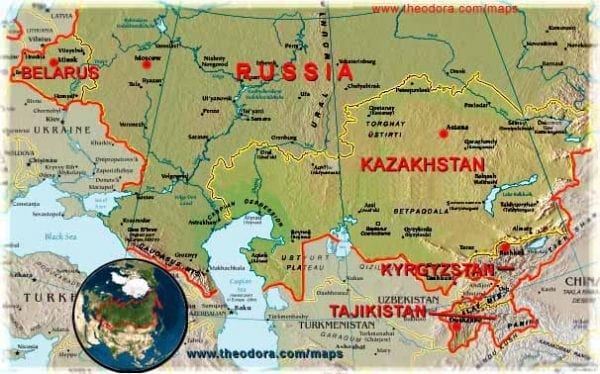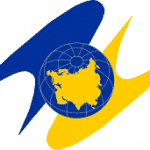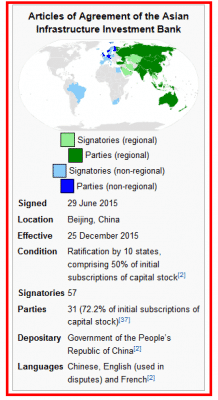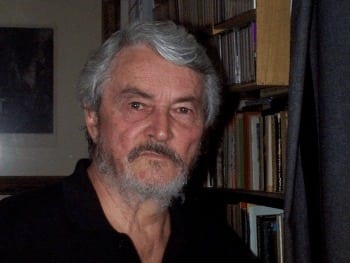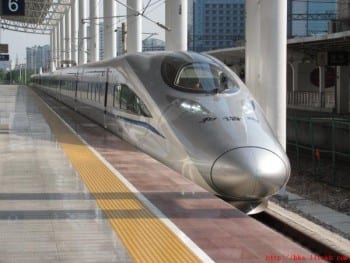A “Holy War” Against China: Beijing and the Turkic Uyghur Threat
A “Holy War” Against China
Newsletter 40: Beijing and the Turkic Uyghur Threat
Hello again dear readers, In this issue of my periodic newsletter I want to go into the deep background to a little-known role of US intelligence, the CIA to be more precise, in infiltrating China’s Uyghur Muslim population over a period of decades. Recent Western mainstream media and US Congress members have made allegations that Beijing has created internment camps in China’s western Xinjiang Province where an estimated 11 million Muslim Uyghurs live. While Beijing vehemently denies interring one million Uyghurs, the charges are serving to increasingly demonize China as an “enemy regime,” along with Russia, in Western media. The recent chorus of attacks on Beijing over treatment of its Muslim minority in Xinjiang conveniently ignores the relevant background to why Beijing is very alarmed about its Muslim Uyghurs. One major reason is that there are an estimated 5-18,000 Uyghurs fighting as Islamic Jihadists in Syria, and reportedly being groomed to return to China to wage Jihad against the government in the region which is the heart of China’s oil and gas pipeline networks and a hub for the New Silk Road. The role of Turkey and the Erdogan government in supporting what he calls “East Turkestan peoples” is at best unclear, at worst, malicious. At this juncture, what is clear is that China’s Uyghur problem has its roots in the decades of Saudi Wahhabite oil money financing CIA projects across Asia on behalf of the Muslim Brotherhood and their terrorist spinoff groups including Al Qaeda, Al Nusra Front in Syria and ISIS. The following is taken from my recent best-selling book, “The Lost Hegemon: Whom the Gods Would Destroy...” The book is available as are my other titles on Amazon and in Kindle format as well. As well I would ask you also to consider going to the Donate button at the top of my website and making a contribution to support my continued publishing. Warm regards,
F. William Engdahl Frankfurt, Germany
What readers are saying about The Lost Hegemon:
 -- Jay Taylor, Host, Turning Hard Times into Good Times -- Jay Taylor, Host, Turning Hard Times into Good Times
"... I STRONGLY RECOMMEND THIS BOOK ...“ -- Steve Carlisle “... You have to read this book ...” -- Ed the Fred |
You can find this great and informative book on amazon.com :
The Lost Hegemon © F. William Engdahl
Chapter Twelve:
A “Holy War” Against China
“The policy of guiding the evolution of Islam and of helping them against our adversaries worked marvelously well in Afghanistan against the Russians. The same doctrines can still be used to destabilize what remains of Russian power, and especially to counter the Chinese influence in Central Asia.”1
—Graham E. Fuller, 1999, key CIA architect of US Islam strategy
Stirring Up Some Uyghur Muslims
[dropcap]I[/dropcap]n early 1979, months before the Soviet occupation of Afghanistan, US National Security Adviser Zbigniew Brzezinski drafted a top-secret Presidential Order as noted earlier. It was signed by President Jimmy Carter. The order authorized the CIA to train fundamentalist Saudi and other Muslims to wage a Holy War, or Jihad against the Soviet communist “infidels,” non-believers in the strict Islamic faith of Sunni conservative Islam. The resulting Mujahideen terror war against Soviet soldiers in Afghanistan was the largest covert action in CIA history, lasting almost nine years before the Soviets retreated out of Afghanistan and, soon after, called an end to the Cold War.2
Brzezinski’s strategy, which he called the “Arc of Crisis” strategy, was basically to set aflame the Muslim populations of Soviet Central Asia in order to destabilize the Soviet Union at a time of growing Russian economic crisis internally.
In 1998, almost ten years later and well after the collapse of the Soviet Union, in a triumphant interview in the French magazine Le Nouvel Observateur, Brzezinski defended his deployment of fundamentalist Islamic radical terrorists in Pakistan and Afghanistan. He revealed, for the first time, in that interview (deliberately excluded from US editions of the magazine) that, whereas the Soviet army invaded Afghanistan on December 24, 1979, some six months earlier, on July 3, 1979, President Carter had signed the first top secret directive, code-named Operation Cyclone, for secret US aid to the opponents of the pro-Soviet regime in Kabul. It was done on Brzezinski’s advice, correctly calculating that the secret support of radical political Islamic fighters carrying the Sword of Islam would induce the Soviets to invade. Washington wanted the Soviets to undergo their own “Vietnam” defeat in Afghanistan.
Asked by Le Nouvel Observateur if he had regrets for having armed and trained future Islamic terrorists, he snapped, “What is most important to the history of the world? . . . Some stirred-up Moslems or the liberation of Central Europe . . . ?”3
Since that time, some thirty-five years ago, the US Pentagon and CIA, or definite hawkish factions within, had used radical political Islam—“some stirred up Muslims”—around the world, in order to destabilize countries that stood in the way of the Sole Superpower—the USA—and what President George H.W. Bush in his September 11, 1991, speech called the “New World Order,” an American-run totalitarian global order.
That covert use of political Islam or “Jihad” Islam by Western, especially US, intelligence was largely either overlooked by US allies and other countries or not understood for the danger it posed.
CIA and Xinjiang’s Uyghur Islamist Unrest
One of the major architects of Brzezinski’s Islamic Arc of Crisis strategy in 1979 and after was a career senior CIA Middle East specialist, Graham E. Fuller, a specialist in “Islamic extremism,” also known as political Islamic Jihadism. In 1999, Fuller wrote a policy paper for the RAND Corporation, a Pentagon-linked think tank, in which he stated, “The policy of guiding the evolution of Islam and of helping them against our adversaries worked marvelously well in Afghanistan against the Russians. The same doctrines can still be used to destabilize what remains of Russian power, and especially to counter the Chinese influence in Central Asia [author’s emphasis—F.W.E.].”4
Fuller’s proposal had become fundamental US secret strategic policy by the late 1990s. Washington’s policy of “weaponizing” and training radical Islamists and establishing thousands of radical Islamist schools and madrassas across the Middle East, Africa, and Central Asia, complete with CIA-translated radical school books and Koran interpretations that fanned hatred of “infidels” or non-Sunni Muslims, was to be directed at the emerging economic colossus of China and also against a then weaker Russian foe.
With the chaos after the collapse of the Soviet Union in the beginning of the 1990s, the CIA rushed into the newly independent Central Asian republics to immediately establish their presence, using as their proxy the veterans of the Afghan Mujahideen wars. They flew Mujahideen Jihadists into Azerbaijan to get control of the government for US and British oil companies.5 They brought Mujahideen into Chechnya and the former Soviet Caucasus to wreak terror and chaos there to block a Russian-Azeri oil pipeline and weaken a struggling Russia in the Yeltsin era.
Less known, they also brought their Mujahideen Holy War veterans into Uzbekistan, Kyrgyzstan, and even inside the borders of China’s largely Muslim Xinjiang Province. Graham Fuller’s proposal was being secretly implemented against China.
The 2009 Urumqi Riots
The effects of Fuller’s plan became bluntly obvious for the Beijing government in 2009, when Uyghur Islamist radicals began a wave of terror and violent attacks against Han Chinese in Xinjiang, supported by CIA and CIA-financed front organizations.
Xinjiang Uyghur Autonomous Region, a strategic province at the heart of China’s energy economy and crossroads for vital energy pipelines from Kazakhstan, was also the world’s fourth largest concentration of ethnic Turkic Muslim peoples with approximately eight million Uyghurs, Kazaks, and Kyrgyz in Xinjiang.
That made Xinjiang a prime target for a carefully planned activation of a pan-Turkic destabilization strategy developed by the CIA’s Graham Fuller and
others in Washington. Their aim was to foster the idea of a “New Ottoman (Turkic) Caliphate,” or pan-Turkic theocracy, recalling the oppressive Ottoman Caliphate that collapsed after the First World War. The CIA’s target Turkic countries or provinces, in addition to Xinjiang and Turkey, were the Azeri populations of Iran and Azerbaijan, Uzbekistan, Kazakhstan, Turkmenistan, and Kyrgyzstan.
Riots and unrest in Urumqi exploded with deadly violence on July 5, 2009. The propaganda voice of Uyghur Muslims behind the riots was the World Uyghur Congress (WUC), a strange exile group in Washington, DC, headed by wealthy Xinjiang political operative Rebiya Kadeer, whose husband, Sidiq Rouzi, left China for the United States to work for the US Government radio stations Radio Free Asia and Voice of America, both known CIA front organizations.
Working together with the WUC was another exiled Uyghur, Erkin Alptekin. Alptekin was founder and Honorary President of another strange group, the Unrepresented Nations and Peoples Organization (UNPO). Just seven weeks before the riots were triggered by the World Uyghur Congress call to protest, a US NGO financed by the US government and a reported front for the CIA, namely the National Endowment for Democracy (NED), held a conference in Washington titled East Turkestan: 60 Years under Communist Chinese Rule. The conference was cosponsored by Alptekin’s Unrepresented Nations and Peoples Organization. In brief, the Uyghur exile movement had become a CIA asset.6
Erkin Alptekin founded UNPO while working for the US Information Agency’s official propaganda organization, Radio Free Europe/Radio Liberty, as Director of their Uygur Division and Assistant Director of the Nationalities Services. Radio Liberty had been a propaganda instrument of the CIA and the US State Department since the beginning of the Cold War.
The World Uyghur Congress played a key role to “trigger” the July 2009 riots. Their website wrote about an alleged violent attack on June 26 in China’s southern Guangdong Province at a toy factory, where the WUC alleged that Han Chinese workers attacked and beat to death two Uyghur workers for allegedly raping or sexually molesting two Han Chinese women workers in the factory. On July 1, the Munich office of the WUC issued a worldwide call for protest demonstrations against Chinese embassies and consulates for the alleged Guangdong attack, despite the fact they admitted the details of the incident were unsubstantiated and filled with allegations and dubious reports.7
According to a press release they issued, it was that June 26 alleged attack that gave the WUC the grounds to issue their worldwide call to action.
On July 5, a Sunday in Xinjiang, the WUC in Washington claimed that Han Chinese armed soldiers seized any Uyghur they found on the streets, and, according to official Chinese news reports, widespread riots and burning of cars along the streets of Urumqi broke out, resulting over the following three days in over 140 deaths.8
China’s official Xinhua News Agency said that protesters from the Uyghur Muslim ethnic minority group began attacking ethnic Han pedestrians, burning vehicles, and attacking buses with batons and rocks. “They took to the street . . . carrying knives, wooden batons, bricks and stones,” they cited an eyewitness as saying. The French AFP news agency quoted Alim Seytoff, general secretary of the Uyghur American Association in Washington, as saying that, according to his information, police had begun shooting “indiscriminately” at protesting crowds.9
There are two different versions of the same events: The Chinese government and pictures of the riots indicated it was Uyghur riots and attacks on Han Chinese residents that resulted in deaths and destruction. French official reports put the blame on Chinese police “shooting indiscriminately.” Significantly, the French AFP report relied on the NED-funded Uyghur American Association of Rebiya Kadeer for its information.
The riots in Xinjiang, triggered by Washington-based Uyghur organizations, broke out only days after a meeting took place of the member nations of the Shanghai Cooperation Organization, as well as with Iran’s official observer guest, President Ahmadinejad, in Yekaterinburg, Russia. There was a clear connection between the Yekaterinburg meeting and the Uyghur riots. Washington was not at all happy to see the nations of Eurasia cooperate.
A New “Turkic” Empire?
The CIA’s main tool to spread Islamist ideology in all the key Central Asian regions, including in Xinjiang, after the Cold War was a reclusive Turkish former Imam named Fethullah Gülen.
The CIA’s Graham E. Fuller was a main “sponsor” of Gülen. Fuller and former CIA agent and US Ambassador to Turkey Morton Abramowitz enabled Gülen to obtain permanent residence in Pennsylvania in the 1990s, over the objections of the US State Department, FBI, and Department of Homeland Security.10 The lawyers from the State Department at that court hearing even claimed Gülen had ties to and was financed by the CIA as reason for denying him US residency.11 Gülen’s organization, like most of the political Jihadist organizations backed by the CIA since the Mujahideen in the 1980s, was also alleged to finance its vast empire by dealing in the distribution of Afghanistan heroin.12
Gülen, a vital asset of the CIA’s neoconservative faction that was out to wreak chaos across China and Central Asia to Russia, Iran, and beyond, reportedly was tied to Turkish heroin mafias smuggling Afghan heroin to the West.13
Sibel Edmonds was a former FBI Turkish-language translator who was silenced by the US Justice Department from going public with her uncovering of a deep network of money laundering, illegal drugs, and weapons dealings, including nuclear weapons. She charged that the network she discovered from translating secret FBI wiretapped conversations involved Gülen-affiliated Turkish police, business networks, criminal rogue CIA agents, the State Department, and US Defense Department neoconservative networks at high levels in Washington. According to Edmonds, who brought a US Ohio Court case to force disclosure of this criminal network, Gülen by 2013 had established more than 300 madrassas in Central Asia and what he calls universities that have a front that is called Moderate Islam, but he is closely involved in training mujahideen-like militia Islam who are brought from Pakistan and Afghanistan into Central Asia where his madrassas operate, and his organization’s network is estimated to be around $25 billion.
It is supported by certain US authorities here because of the operations in Central Asia, but what they have been doing since late 1990s is actually radical Islam and militarizing these very, very young, from the age 14, 15, by commandoes they use, and this is both commandoes from Turkish military, commandoes from Pakistani ISI in Central Asia and Azerbaijan. After that they bring them to Turkey, and from Turkey they send them through Europe, to European theaters of action and elsewhere.14
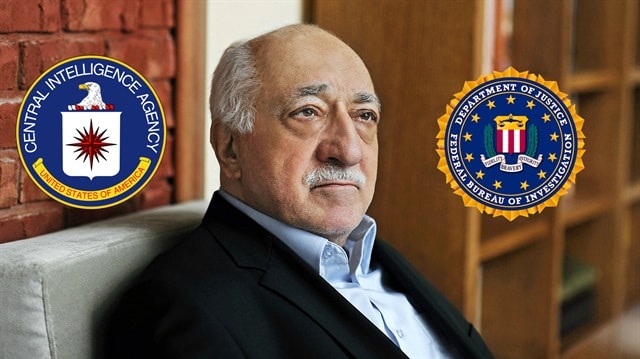
Fetullah Gülen, head of the Gülen movement, accused by Erdogan of helping with a US-suppoted coup in 2015 against him, lives quietly in Pennsylvania.
The Gülen Movement founded madrassas in the 1990s, mostly in the newly independent Turkic republics of Central Asia and Russia. Gülen’s Central Asian madrassas were used as training schools for al Qaeda and served as a front for undercover CIA and US State Department officials operating in the region.15
One of Gülen’s protégé’s was Anwar Yusuf Turani, the person who took over the East Turkistan Independence Movement from his exile in Washington, DC after 2003. In 2004, Turani set up the “East Turkistan Government in Exile” and was “elected” Prime Minister.16 It was not clear who exactly “elected” Turani. Washington was clearly happy to give him a platform for his anti-Beijing activities in Xinjiang.
Significantly, according to a report in a Turkish investigative magazine, Turk Pulse, Turani’s organization’s “activities for the government in exile are based on a report entitled ‘The Xinjiang Project.’ That was written by former senior CIA officer Graham E. Fuller in 1998 for the Rand Corporation and revised in 2003 under the title ‘The Xinjiang Problem.’” 17
In a 1999 interview, Anwar Yusuf Turani claimed that he received financial support from wealthy patrons in Saudi Arabia, home of the ultraconservative Wahhabite Sunni form of Islam that provided the core of Osama bin Laden’s Jihadist Afghanistan Mujahideen terrorist guerrillas in the 1980s.18 Saudi intelligence cooperated with the CIA in those global Islamist Jihad operations.
ETIM and CIA Jihad in Xinjiang
In the late 1990s, Hasan Mahsum, also known as Abu-Muhammad al- Turkestani, founder of the East Turkestan Islamic Movement, had moved ETIM’s headquarters to Kabul, taking shelter under Taliban-controlled Afghanistan. In Afghanistan, ETIM leaders met with Osama bin Laden and other leaders of the CIA-trained Al Qaeda, the Taliban, and the Islamic Movement of Uzbekistan to coordinate actions across Central Asia.19
In his own study of Xinjiang, the CIA’s Graham E. Fuller noted that Saudi Arabian groups had disseminated extremist Wahhabi religious literature and possibly small arms through sympathizers in Xinjiang, and that young Turkic Muslims had been recruited to study at madrasas in Pakistan, Afghanistan and Saudi Arabia. He adds that Uyghurs from Xinjiang also fought alongside Osama bin Laden’s Al Qaeda in Afghanistan in the 1980s.
Fuller noted, “Uyghurs are indeed in touch with Muslim groups outside Xinjiang, some of them have been radicalized into broader jihadist politics in the process, a handful were earlier involved in guerrilla or terrorist training in Afghanistan, and some are in touch with international Muslim mujahideen struggling for Muslim causes of independence worldwide.”20
The goal of the various Islamist Jihad groups the CIA covertly backed, beginning the time of the Afghan Mujahideen in the 1980s, was to spread a cancer of radical Islamic terror and fanaticism to displace the tradition of moderate, peaceful Islam across Central Asia and into Xinjiang, as the earlier cited statement from the CIA’s Graham E. Fuller indicated.
ETIM Joins with IMU
The Islamic Movement of Uzbekistan (IMU ), allies of the East Turkestan Islamic Movement, were tied with Al Qaeda of Osama bin Laden. They also incorporated
Uyghurs from Xinjiang in their battles, giving them vital combat training to return to Xinjiang to wage Jihad inside China.21
After the chaotic collapse of Soviet rule in the early 1990s, the initial focus of the Islamic Movement of Uzbekistan was grabbing control of the vital Fergana Valley spread across eastern Uzbekistan, Kyrgyzstan, and Tajikistan. Returning Afghan war veteran and Uzbek paratrooper Jumaboi Khojayev, radicalized by his contact with Osama bin Laden’s Saudi Jihad Islamist fighters, joined with Tohir Yuldashev to form a radical Salafist Islamist group in Namangan which they called Adolat (“Justice”). They seized control of the civil government in Namangan and quickly imposed Sharia Law, which was ruthlessly enforced by Adolat’s vigilantes.
Adolat was initially tolerated by the newly installed President Karimov. When Adolat demanded that Karimov impose Sharia throughout Uzbekistan in 1992, Karimov moved to outlaw Adolat and reestablish central control over the Fergana Valley region—traditionally one of the most militant Islamic regions in Central Asia. The IMU received large sums of money from patrons in Saudi Arabia, reportedly close to then chief of Saudi Intelligence Prince Turki al-Faisal.22 The triangle of CIA and Saudi intelligence financing Jihadist Islamic groups was to appear again and again.
Fethullah Gülen’s madrassas and Islamist schools were all over Uzbekistan at the same time, many harboring dozens of CIA agents posing as “English teachers.”23 It was Graham Fuller’s strategy being implemented across Central Asia. Both Russia and China were the ultimate targets.
Significantly, there was a large Uyghur exile Muslim population with offices in Istanbul, where Fethullah Gülen’s Hizmat, or movement, at the time was deeply entrenched within the government of Islamist Recep Erdoğan. According to the Turkish journal TurkPulse, “One of the main tools Washington is using in this affair in order to get Turkey involved in the Xinjiang affair are some Turkish Americans, primarily Fetullah Gulen.”24 The Uyghurs in Turkey were actively engaged in promoting East Turkestan autonomy and separatism.25
[dropcap]T[/dropcap]he Uyghur Muslim riots—incited by Rebiya Kadeer’s World Uyghur Congress, Anwar Yusuf Turani’s East Turkistan Independence Movement, and the Turkestan Islamic Party—were all deployed to maximize destabilization and unrest
throughout China’s vital energy hub in Xinjiang. But the focus of Graham Fuller’s friends at the CIA and State Department went far beyond the borders of Xinjiang. Over time, they deployed political Islam cults in Pakistan to disrupt major Chinese- financed infrastructure, in Myanmar to disrupt the vital China-Myanmar energy infrastructure, and across the Middle East and Africa, from Sudan to Libya to Syria, to be in a position to choke off, at will, China’s vital oil and gas lifelines.
“New Silk Road” of Eurasia
In September 2013, Chinese President Xi Jinping made a major tour of Central Asian countries to announce Chinese plans to build a New Silk Road across Central Asia.
The plans included more natural gas for Chinese industry from Turkmenistan, requiring construction of a new branch line for the Central Asia- China gas pipeline, which will also include Tajikistan and Kyrgyzstan. Xi Jinping spoke of building an “economic belt along the Silk Road,” a trans-Eurasian project spanning from the Pacific Ocean to the Baltic Sea. It would, he said in a speech in Astana in Kazakhstan, create an economic belt inhabited by “close to 3 billion people and [would represent] the biggest market in the world with unparalleled potential.”26
In his Turkmenistan visit on the same tour, Xi secured the transnational Turkmenistan-China gas pipeline that would go along the route from Turkmenistan to Uzbekistan–Tajikistan–Kyrgyzstan on to China. Beijing’s only problem was that the Central Asia-China gas pipeline and other pipelines, power lines, and transport networks all ran through the Xinjiang Uyghur Autonomous Region. Xinjiang was targeted by Washington in an ongoing destabilization campaign using Graham Fuller’s friends and their Islamic Jihadist terror bands as their proxies.
As such strategic economic moves by China, potentially positive moves that could lift the largest part of the world’s population into a more prosperous economic life, went forward, certain powerful interest groups in the West— banking, industrial, military, and political—came to view Beijing, only a decade or so earlier the “great friend” of America, now as the new emerging Great Enemy. An Asia Pivot military shift was announced by President Obama to refocus US military activities on blocking that growing Chinese influence.
A central part of their strategy to derail China and its growing Eurasian presence would be the increased deployment of Islamic fundamentalism of the Gülen, Al Qaeda, and Muslim Brotherhood kind against China, Russia, and all Eurasia, the one space that Zbigniew Brzezinski in his famous book The Grand Chessboard called the only possible challenge to America’s future hegemony and dominance.
To understand how that had evolved to the situation of such a threat today it is important to go into the historical roots of political Islam and its emergence after the First World War and after.
Endnotes:
1 Richard Labeviere, Dollars for Terror: The United States and Islam, Algora Publishing, 2000, p. 6.
2 Zbigniew Brzezinski, Ex-National Security Chief Brzezinski admits: Afghan Islamism Was Made in Washington, interview in “Le Nouvel Observateur,” Paris, January 15–21, 1998, p. 76, translated by Bill Blum, accessed in http://www.freerepublic.com/focus/f- news/542984/posts. Notably, according to the American author Bill Blum, “There are at least two editions of ‘Le Nouvel Observateur.’ With apparently the sole exception of the Library of Congress, the version sent to the United States is shorter than the French version. The Brzezinski interview was not included in the shorter version.”
3 Ibid.
4 Richard Labeviere, op. cit.
5 Christoph Germann, The New Great Game Roundup No. 12, accessed in http://christophgermann.blogspot.de/2013/07/the-new-great-game-round-up-12.html.
6 F. William Engdahl, Washington is Playing a Deeper Game with China, Global Research.ca, July 11, 2009, accessed in http://www.globalresearch.ca/washington-is-playing-a-deeper- game-with-china/14327.
7 Ibid.
8 Ibid.
9 Ibid.
10 Sibel Edmonds, Boston Terror CIAs Graham Fuller and NATO CIA Operation Gladio B Caucasus and Central Asia, Boiling Frogs Post, April 27, 2013, accessed in http://www.boilingfrogspost.com/2013/04/27/bfp-breaking-news-boston-terror-cias- graham-fuller-nato-cia-operation-gladio-b-caucasus-central-asia/.
11 Mizgîn, Gülen, the CIA and the American Deep State, Rastibini Blogspot, June 29, 2008, accessed in http://rastibini.blogspot.de/2008/06/glen-cia-and-american-deep-state.html.
12 David Livingstone, Uighur Nationalism Turkey and the CIA, July 31, 2009, accessed in http://www.terrorism-illuminati.com/node/176#.UvjvNLQtqZQ.
13 Ibid.
14 Sibel Edmonds, BEFORE THE OHIO ELECTIONS COMMISSION: DEPOSITION IN THE MATTER OF JEAN SCHMIDT, Plaintiff, vs. DAVID KRIKORIAN, Defendant, Case No. 2009E-003, August 8, 2009, accessed in http://christophgermann.blogspot.de/2013/05/chinas-central-asia- problem.html.
15 Gillian Norman-Jilinda, Beijing Olympics False Flag Attack, 8 August 2008, accessed in http://rense.com/general82/bej.htm.
16 Website, The Government-in-Exile of East Turkestan Republic, accessed in http://www.eastturkistangovernmentinexile.us/anwar_biography.html.
17 Gillian Norman-Jilinda, op. cit.
18 Dru C. Gladney, and S. Frederick Starr, Xinjiang: China's Muslim Borderland, Armonk, New York, 2004, Central Asia-Caucasus Institute, pp. 388–389.
19 Wikipedia, East Turkestan Islamic Movement, accessed in http://en.wikipedia.org/wiki/East_Turkestan_Islamic_Movement.
20 Graham E. Fuller and S. Frederick Starr, The Xinjiang Problem, Central Asia-Caucasus Institute at Paul H. Nitze School of Advanced International Studies, The Johns Hopkins University, pp. 29–37.
21 Wikipedia, Islamic Movement of Uzbekistan, accessed in http://en.wikipedia.org/wiki/Islamic_Movement_of_Uzbekistan.
22 Ramtanu Maitra, Drug Infested Ferghana Valley Target of the Axis of Three Devils, 01 August 2010, accessed in http://www.vijayvaani.com/ArticleDisplay.aspx?aid=1341.
The Insider,” Boiling Frogs Post, January 11, 2011, accessed in http://www.boilingfrogspost.com/2011/01/11/additional-omitted-points-in-cia-gulen- coverage-a-note-from-%E2%80%98the-insider%E2%80%99/.
24 David Livingstone, op. cit.
25 Graham E. Fuller, op. cit., p. 46.
26 Wu Jiao and Zhang Yunbi, Xi proposes a new Silk Road with Central Asia, China Daily, September 8, 2013, accessed in http://usa.chinadaily.com.cn/china/2013- 09/08/content_16952304.htm.
Strasse der Republik 17
Wiesbaden Hessen 65203
GERMANY
 Born in Minneapolis, Minnesota, United States, Engdahl is the son of F. William Engdahl, Sr., and Ruth Aalund (b. Rishoff). Engdahl grew up in Texas and after earning a degree in engineering and jurisprudence from Princeton University in 1966 (BA) and graduate study in comparative economics at the University of Stockholm from 1969 to 1970, he worked as an economist and freelance journalist in New York and in Europe. Engdahl began writing about oil politics with the first oil shock in the early 1970s. His first book was called A Century of War: Anglo-American Oil Politics and the New World Order and discusses the alleged roles of Zbigniew Brzezinski and George Ball and of the USA in the 1979 overthrow of the Shah of Iran, which was meant to manipulate oil prices and to stop Soviet expansion. Engdahl claims that Brzezinski and Ball used the Islamic Balkanization model proposed by Bernard Lewis. In 2007, he completed Seeds of Destruction: The Hidden Agenda of Genetic Manipulation. Engdahl is also a contributor to the website of the anti-globalization Centre for Research on Globalization, the Russian website New Eastern Outlook,[2] and the Voltaire Network,[3] and a freelancer for varied newsmagazines such as the Asia Times. William Engdahl has been married since 1987 and has been living for more than two decades near Frankfurt am Main, Germany.
Born in Minneapolis, Minnesota, United States, Engdahl is the son of F. William Engdahl, Sr., and Ruth Aalund (b. Rishoff). Engdahl grew up in Texas and after earning a degree in engineering and jurisprudence from Princeton University in 1966 (BA) and graduate study in comparative economics at the University of Stockholm from 1969 to 1970, he worked as an economist and freelance journalist in New York and in Europe. Engdahl began writing about oil politics with the first oil shock in the early 1970s. His first book was called A Century of War: Anglo-American Oil Politics and the New World Order and discusses the alleged roles of Zbigniew Brzezinski and George Ball and of the USA in the 1979 overthrow of the Shah of Iran, which was meant to manipulate oil prices and to stop Soviet expansion. Engdahl claims that Brzezinski and Ball used the Islamic Balkanization model proposed by Bernard Lewis. In 2007, he completed Seeds of Destruction: The Hidden Agenda of Genetic Manipulation. Engdahl is also a contributor to the website of the anti-globalization Centre for Research on Globalization, the Russian website New Eastern Outlook,[2] and the Voltaire Network,[3] and a freelancer for varied newsmagazines such as the Asia Times. William Engdahl has been married since 1987 and has been living for more than two decades near Frankfurt am Main, Germany.


